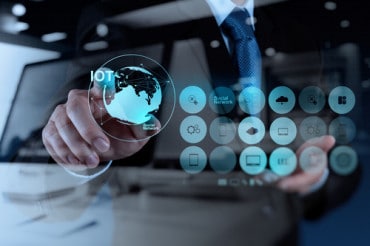
Blockchain is already transforming the way businesses operate, particularly when it comes to invoicing.
From the million-dollar scam that cost tech giants like Google and Facebook $122 million many years ago to the PayPal invoice scam doing rounds this year, scamsters have only become more sophisticated and convincing in their approach. Moreover, technological advancements making Artificial Intelligence more accessible today make things trickier. Increasingly, blockchain technology is being called on to help prevent fraud.
Think about how ChatGPT, given its ability to generate humanesque text, and trained on large amounts of data, including invoices and financial documents, can be misused to conduct invoicing fraud. This makes it easier for bad actors to impersonate legitimate businesses and create fraudulent invoices to trick others into paying for something they did not receive. The fascinating thing about technology, however, is that it’s double-edged- capable of good and bad. Let’s look at how technology, in the form of blockchain, has come through to turn things around for invoicing.
How blockchain changes the narrative
As one of the most valuable sources of information that forms the foundation of doing business, invoices also run the risk of being misused. It’s not surprising that the world of invoicing is tainted with liquidity risks, operational costs, disputes, losses, and fraud. But the good news is that blockchain technology and its limitless potential can make a huge difference in this situation.
For starters, consider the immutability that blockchain brings to the table. By providing an immutable ledger that records every transaction, blockchain makes invoicing tamper-proof. This means that once a transaction is recorded, it cannot be altered or deleted. For scammers, this makes it much more difficult to manipulate the invoicing data or to create fraudulent invoices, bypassing detection.
The benefit of risk minimization comes from something that’s inherent to the network that blockchain technology operates on- decentralization. By operating on a decentralized network, the ledger is distributed across a network of computers, eliminating the need for a central authority to oversee the invoicing process, in turn reducing the risk of corruption or fraud.
See also: The Decade of Blockchain: What That Means for Industry
Automating processes through smart contracts
Blockchain technology allows for the use of another tool that has emerged as a game changer in the industry- smart contracts, which are self-executing contracts with the terms of the agreement written into the code itself. They can be programmed to automatically verify and execute invoices based on predefined conditions, including payment terms and delivery requirements. Smart contracts and invoicing go together like a natural match and reduce the risk of invoice fraud by ensuring that invoices are only processed if they meet specific criteria.
By automating the invoicing process, blockchain eliminates the need for manual processing and, as a result, also significantly reduces the time required to complete transactions. Besides the fact that time is money and that this makes processes extremely cost efficient, it also reduces the risk of fraud by creating a more efficient system that is less susceptible to human error.
What’s more, smart contracts also help create more flexible and customized invoicing processes that can seamlessly adapt to the needs of businesses and their customers. One may wonder if smart contracts can accommodate complex invoicing arrangements. That’s possible too. Consider variable pricing based on usage or other conditions- a smart contract could be used to automatically adjust pricing with respect to changes in the price of raw materials or even execute discounts or penalties based on specific performance metrics. Now, imagine the plight of having to manually adjust and implement these arrangements, that too with the possibility of error and manipulation always lurking around. From the creation of the invoice to its payment, blockchain ensures the authenticity of an invoice at various stages. We’re starting to see how smart contracts make invoicing smart!
Doubling up the vigilance: What happens when IoT is added to the mix?
The Internet of Things (IoT) may have seemed like it was straight out of fiction many years ago, but today it’s very much part of our reality. That being the case, what does it mean for invoicing? Long story short, IoT sensors enable the collection of real-time data from physical objects and environments, designed to measure various types of data, such as temperature, humidity, pressure, light, motion, sound, etc., and send that data to a network or cloud-based platform for processing analysis and decision making.
Using IoT sensors to collect data such as temperature, weight, and location of products or services being delivered, and leveraging blockchain technology to automatically record it on the ledger, translates to an extremely efficient method to verify the authenticity of an invoice. Real-time data on the status of deliveries allows for the tracking of shipments to ensure that the invoiced products or services are actually delivered. What this also does for the businesses is equip them to optimize their inventory management, thereby reducing the risk of overstocking or running out of stock. Subsequently, this can help prevent fraudulent billing as well as reduce the likelihood of invoicing errors stemming from incorrect inventory data. In short, something seemingly simple as automatically recording the delivery of goods and services can significantly reduce the risk of errors or fraud.
It’s not always fake invoices and phishing attempts- sometimes, it could be just errors
It doesn’t necessarily have to be fraud or phishing, but even unintentionally made errors could cause confusion and reason for mistrust between two parties involved in a business transaction. Implementing a blockchain invoicing system will enable businesses to create a transparent and auditable record of all transactions related to what they offer, which can then be accessed and verified by all relevant parties. By ensuring that the invoice amount accurately reflects the previously agreed-upon terms and conditions of the service, this arrangement also helps prevent instances of overcharging.
Similarly, IoT devices can be used to monitor the usage of services in real time. Think about how smart meters, powered by IoT, could be used to track the usage of resources like electricity, water, or gas to provide accurate data, which can be compared against the invoiced amount to verify if it’s a fair charge. It’s interesting to note how smart contracts could also be incorporated into this setting to ensure that invoicing is accurate and timely, in addition to preventing the risk of overcharging. A smart contract could be used to automatically generate an invoice when a certain amount of usage is reached or to trigger a payment when a certain condition is met.
The future of invoicing looks promising, thanks to blockchain technology
With its immense potential to significantly reduce the time, cost, and risk associated with transactions, blockchain is already transforming the way businesses operate, particularly when it comes to invoicing. Moreover, when combined with other emerging technologies like the Internet of Things (IoT), blockchain technology acts as a catalyst for making invoicing processes as efficient, seamless, and transparent as possible.





























